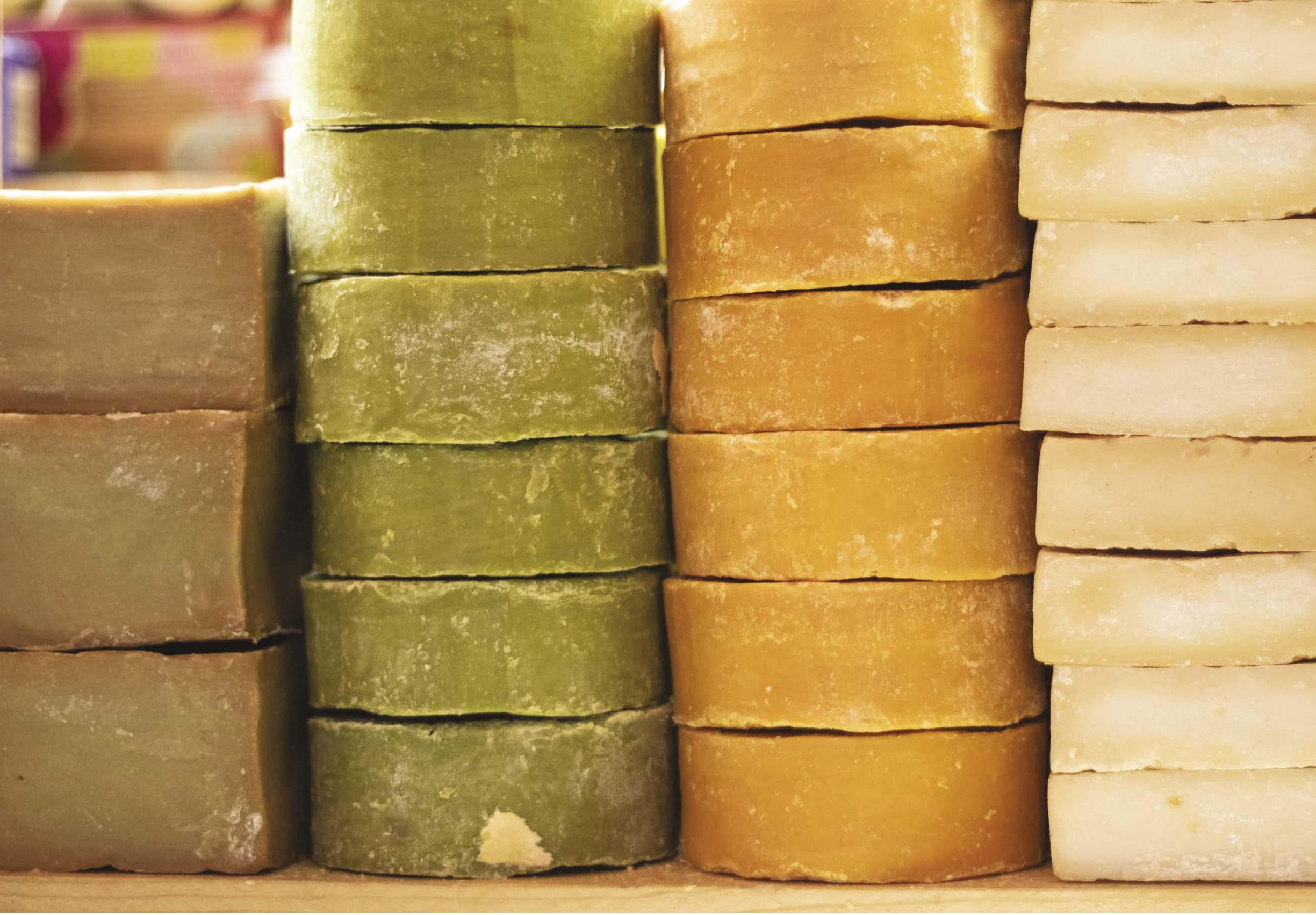
Goat milk contains more than 50 nutrients, minerals, acids and enzymes that nourish and revitalize dehydrated skin. Regular use of goat milk soap will maintain a moisture balance that results in smoother, softer skin.
The best goat milk to use for soap is filtered, not pasteurized, though any goat milk will yield good soap.
OPTIONS
Get creative by mixing herbs, exfoliants, essential oils and more into your goat milk soaps. Here are some commonly used additives that will give your recipe its own style.
• HERBS (POWDERED): Chamomile, calendula, jasmine tea, marshmallow root, patchouli
• EXFOLIANTS (GROUND): Apricot seed, oatmeal, chicory, cornmeal. If you add an exfoliant, use the soap only once a week to avoid over-stimulating your pores.
• ESSENTIAL OILS VS. FRAGRANCE OILS: There are two types of scenting oils: fragrance oils and essential oils. An essential oil is produced by distilling the oil out of the plant from which it originates. In contrast, fragrance oil, also called “essence,” is a manmade chemical that’s steeped in alcohol. Essential oils are better for scenting your goat milk soap because they have better scent retention. Also, many fragrance oils change the consistency of soap, making it difficult to make correctly. If you want to try a fragrance oil, test a small batch to see if you like the results. Popular scenting oils include rose, gardenia, lavender, tea tree and peppermint.
• OTHER ADDITIVES: honey, aloe vera, vitamin E oil (squash a gel tablet)
This story is from the Goats 101 - 2023 edition of Hobby Farms.
Start your 7-day Magzter GOLD free trial to access thousands of curated premium stories, and 9,000+ magazines and newspapers.
Already a subscriber ? Sign In
This story is from the Goats 101 - 2023 edition of Hobby Farms.
Start your 7-day Magzter GOLD free trial to access thousands of curated premium stories, and 9,000+ magazines and newspapers.
Already a subscriber? Sign In

The RISE of Opportunist WEEDS
Be prepared to see increasing changes in weeds we fight, such as poison hemlock and poison ivy, and in the crops we grow.

LIVESTOCK Health
Prepare yourself for how to spot symptoms of illness in your farm animals so that you can get them help before it's too late.

CUT FLOWER Farming
If you're considering growing flowers for sale, brush up on these five key things to know before diving in.

WINTER Survival
Keep your land, animals and yourself in good shape this winter with this helpful advice.

COVERAGE CONCERNS
Avoid common insurance mistakes for rural and hobby farm businesses.

FARMER'S GUIDE Berries
Set the stage for tasty strawberries, blueberries and brambles with these soil-boosting garden tips.

Preconditioning CALVES
Follow our step-by-step guide to get more money for your calves.

Soil Conservation
Often, outside of having a specific problem that needs to be addressed, soil conservation isn't something every farmer readily thinks about. Yet conserving the soil should be at or near the top of every farmer owner or manager's list of concerns because absent the prevention of soil erosion, we have the opportunity for another dust bowl.

Year-Round Lettuce & Salad Mixes
It's easy to think of salad greens as just a spring- or fall-garden crop, but it's possible to enjoy freshly harvested lettuces, mustards and more from your own garden year-round.

Barn Improvements
Days are never long enough for a farmer. From dawn to well into the night, tasks arise that often require immediate action. Having to search for tools or equipment is an enormous time waster and incredibly frustrating when you can't find what you need, especially when you know you have it.